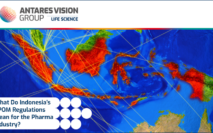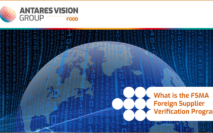Serialization is the process of assigning predetermined codes to each unit or container of medication you manufacture. The code or serial number assigns each product item a digital identity, which you can track and trace as it progresses throughout the supply chain. Pharmaceutical serialization is a common type which is used to track and trace and provide supply chain visibility for pharmaceutical drugs.
When designing a codification system, you can make your serialization codes as detailed as government regulations necessitate.
Additionally, you can incorporate information like the date of production, when and where the item was manufactured, a lot or batch number, the stock-keeping unit (SKU), a drug or product description, and the manufacturer’s Global Trade Identification Number (GTIN).
Leading solutions also provide built-in code structure flexibility that can accommodate customized application identifiers (AIs). GS1, the internationally-recognized system of standards, created a dynamic definition of AIs that gives you the freedom to include a wealth of information in your code.
Now that we’ve addressed the question, “What is serialization,” let’s examine why it’s important to the pharmaceutical industry and how you can tap into significant organizational benefits by adopting modern serialization software.
What Is Pharmaceutical Serialization?
To adequately define serialization, we must not only consider the meaning of the term but also discuss why serializing products is a critical business management process.
Over the last several years, regulatory entities such as the European Medicine Agency (EMA) and the U.S. Food and Drug Administration (USFDA) have implemented significant changes to pharmaceutical regulations.
Why Is Serialization Important in the Pharmaceutical Industry?
The FDA’s Drug Supply Chain Security Act (DSCSA) is the most notable of these changes. While the DSCSA was passed in 2013, its final phase of provisions will come into force in late 2023. Among other things, this act requires that pharmaceutical products be serialized to promote traceability and preserve product integrity.
Serialization techniques may vary slightly from one nation to another. However, all labels will include some basic product information, regardless of the country of origin.
For instance, a product label will typically include the following:
- A unique serial number
- A batch number
- An expiration date
- An identification code
Performing pharmaceutical serialization reduces the risks of harm associated with counterfeit medicines seeping into the market. Additionally, serializing medications allows regulatory authorities to hold violators accountable, preserve the integrity of the pharmacological supply chain, and protect consumers.
From your organization’s perspective, pharmaceutical serialization plays an important role in compliance. The aforementioned laws impose harsh penalties on entities that fail to comply with labeling and serialization requirements.
Looking Beyond Compliance: The Benefits of Pharmaceutical Serialization
Now that we’ve answered the question, “What does serialization mean” and touched on the growing importance of this tracking and identification method, let’s shift our attention to the benefits of implementing a serialization strategy.
Pharmaceutical serialization is an effective way of ensuring adherence to regulatory requirements and safety guidelines. Countless entities within the pharmaceutical space use serialization software for data validation and compliance purposes.
That said, compliance is just one benefit of pharmaceutical serialization. It can also assist with the following:
Supply Chain Visibility
The pharmacological supply and distribution network is one of the most complex in existence. Historically, this complexity has made achieving end-to-end supply chain visibility difficult.
While pharmaceutical serialization won’t entirely solve the industry’s visibility problem, it will certainly have a big impact on overall supply chain transparency. By equipping products with unique identifiers, manufacturers can track materials, ingredients, and finished products as they progress through the supply chain.
Serialization enables manufacturers to closely manage their logistics processes. They can use these insights to pinpoint potential bottlenecks, increase supply chain efficiency, and ensure the timely delivery of goods to consumers.
Combating Counterfeiting
According to the Centers for Disease Control (CDC), approximately 9%–41% of medicinal products sold in low-to-mid-income nations are counterfeit.
Comparatively, less than 1% of pharmaceutical products sold in the U.S. are counterfeit. The FDA’s stringent labeling and serialization requirements are a major reason why counterfeit medicines aren’t a major issue in the U.S.
Expanding pharmaceutical serialization standards can help combat counterfeiting in less-developed low-income countries. Putting a stop to the distribution and sale of fraudulent products will also enable manufacturers to preserve their reputations in international markets.
Serialization gives retailers, distributors, and end users a means of discerning whether products are part of a legitimate batch of medication. Scannable codes are a particularly convenient and useful authentication tool, as they’re difficult for counterfeiters to fake.
Coordinating Product Recalls
Despite a manufacturer’s best efforts, medical devices and drugs sometimes must be recalled and taken out of circulation. Without an effective pharmaceutical serialization strategy in place, manufacturers must cast a wide net. This leads to significant waste, as safe, effective products are recalled and disposed of.
Properly executed pharmaceutical serialization helps manufacturers determine precisely which batches were impacted so they can reduce waste and limit the scope of recalls. Serialization and labeling also enable manufacturers to coordinate with government agencies to maximize the efficiency of recall efforts.
Monitoring Consumption Rates
Through serialization and labeling, manufacturers can track products from the factory to the point of consumption. They can leverage these insights to monitor each batch, examine consumption volume, and keep up with demand.
As demand wanes, manufacturers can adjust accordingly to preserve liquidity and avoid over-ordering raw materials. If consumer demand spikes suddenly, the manufacturer can scale production back up to prevent shortages and ensure that patients have access to essential medications.
Challenges to Serialization
As you can see, pharmaceutical serialization is a critical component of compliance. This process also has an impact on client satisfaction, patient safety, and your organization’s profitability.
Efficient serialization processes will enable you to adapt effectively to fluctuating consumer demand, protect your brand image, and optimize supply chain visibility. However, before you can unlock the benefits of pharmaceutical serialization, you must first overcome several challenges, including the following.
Aggregation
Data aggregation is key to promoting traceability and supporting the steady flow of goods across the pharmaceutical supply chain. Aggregation is the process of consolidating information from each participant in your supply chain into a unified, secure, and accessible database.
Let’s say your organization is the third link in the supply chain. The first is the raw material supplier, and the second is the carrier that delivers those materials to your facility.
When you receive the materials, you must assimilate the information from the supplier and carrier into your database. You also need to supplement this information with your own data.
Deadlines
Facing a rapidly approaching deadline can lead to a mad dash to modernize your pharmaceutical serialization protocols. Feeling the pressure of these deadlines will speed up your adoption process, right? Yes and no.
While you may be able to quickly adopt some new technology, waiting until the last minute can cause you to overlook essential steps during implementation. As a result, you’ll have to backtrack to fix gaps in your serialization strategy.
If you haven’t already begun implementing pharmaceutical serialization technology and processes, now is the time to start.
Repacking
Aggregating data will help you track and serialize whole boxes and pallets of products. But what happens if a customer needs a partial pallet or box? While you could raise your minimum order quantities (MOQ) to prevent this, doing so can deter purchases and negatively impact your sales volume.
When designing your serialization process, include an integrated repack phase so you can offer partial orders. When a picker scans the item serial numbers, the solution will repack the numbers and assign product data to the appropriate pallet or box.
Infrastructure
While you may already have serialization software, that platform likely lacks the scalability and flexibility of more modern solutions. As a result, you may not have the technological infrastructure necessary to support efficient pharmaceutical serialization.
The good news is the solution to this hurdle is relatively simple: replace your aging legacy technology with the world’s most scalable and robust serialization software from rfxcel.
Our leading-edge, flexible serialization solution can help you meet today’s labeling requirements and prepare for the unexpected regulatory challenges of tomorrow. Rfxcel not only provides you with dynamic software but also assists with the implementation process so you can maximize your ROI while minimizing the procedural hassle.
Expedite Your Serialization Implementation Process with rfxcel
With the final phase of the DSCSA rollout rapidly approaching, your organization must ensure that it has the right serialization software to support its compliance. Otherwise, you’ll find yourself struggling to meet the stringent requirements of the FDA’s latest drug safety and traceability provisions.
Serialization isn’t just crucial for pharmaceutical compliance. It also influences patient safety. By engaging in serialization, you can prevent bad actors from perpetrating your supply line and releasing illegitimate medications under your brand name.
Fraudulent activities endanger consumers and threaten your organization’s reputation. Fortunately, you can protect consumers, preserve your brand image, and ensure compliance with the DSCSA by partnering with a forward-thinking serialization software provider like rfxcel.
We offer a variety of labeling, tracing, and serialization solutions designed to meet the unique needs of the pharmaceutical sector.
Contact rfxcel today to learn more about our suite of solutions.





